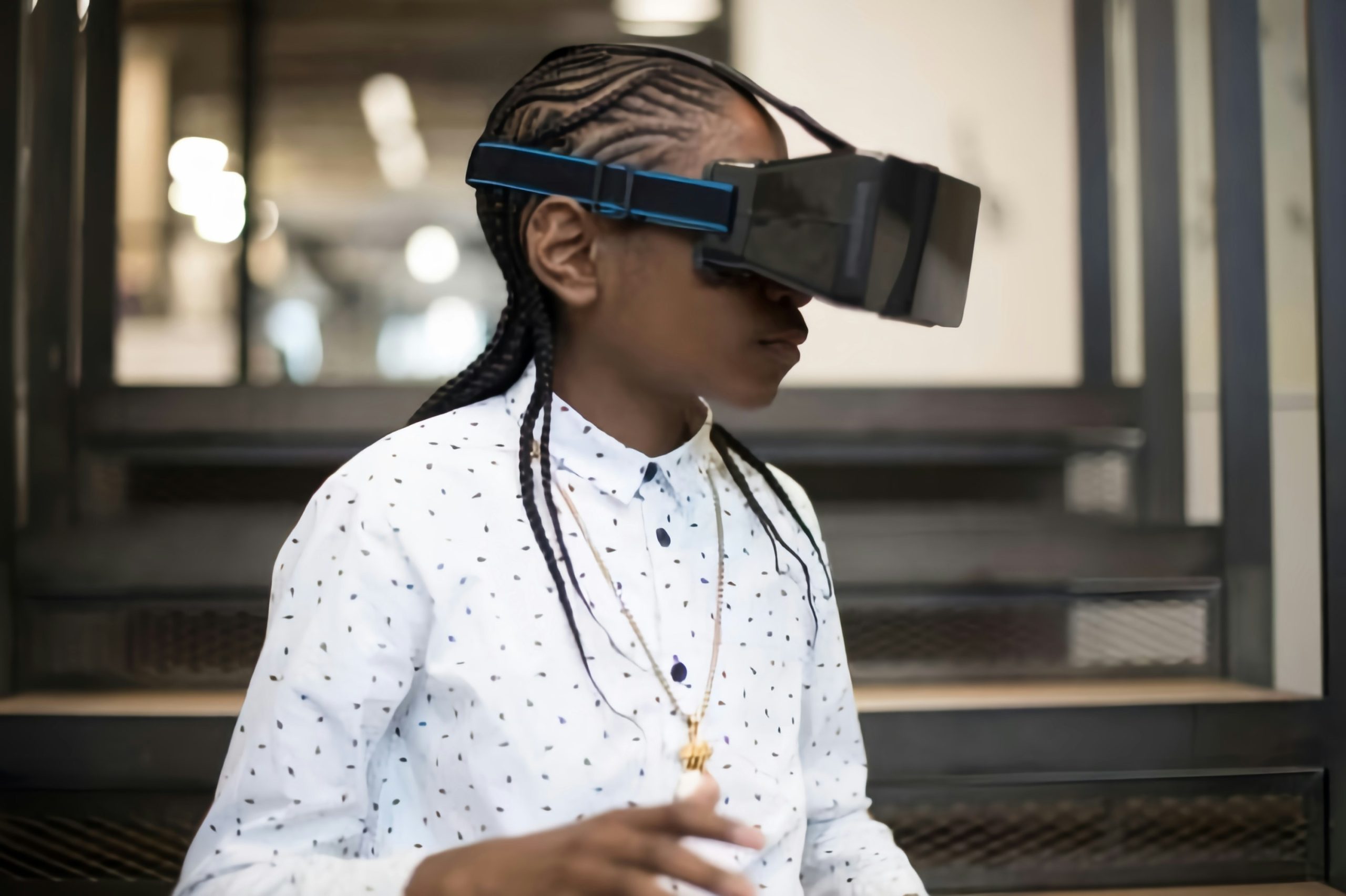Metaverse Mania: Is It the Future or Just Hype?
As you navigate the whirlwind of metaverse mania, the question lingers: Is this virtual realm truly the future of human interaction, or is it merely a passing trend? With tech giants racing to carve their space in this digital landscape and users increasingly immersing themselves in virtual experiences, the debate intensifies. Stay tuned as we unravel the layers of potential and skepticism surrounding the metaverse, exploring its promises and pitfalls that could shape the way we connect, create, and consume in the coming years.
The Rise of the Metaverse
The metaverse has rapidly emerged as the latest buzzword in the tech world, promising a virtual reality experience like never before. Imagine immersing yourself in a digital universe where you can socialize, work, play, and explore without leaving your home. Companies are investing heavily in creating this interconnected virtual space, envisioning a future where people seamlessly transition between the physical and digital worlds.
In this metaverse, you can attend virtual concerts, shop at digital stores, and even attend meetings in simulated environments. The possibilities seem endless, with potential applications in education, entertainment, business, and more. As technology advances, the line between reality and virtuality continues to blur, offering a glimpse into a future where the digital realm becomes an integral part of everyday life.
With the rise of virtual reality headsets, augmented reality glasses, and immersive technologies, the metaverse is becoming increasingly tangible. It’s a compelling vision of a future where you can create, connect, and experience in ways previously unimaginable.
Virtual Reality Vs. Real Life
Comparing virtual reality to real life, you’ll notice distinct differences in sensory experiences and interactions. In virtual reality, you can immerse yourself in visually stunning landscapes, interact with digital objects, and engage in activities that may not be feasible in real life. The sense of presence and control in virtual environments can be exhilarating, offering a level of escapism and entertainment that real life sometimes lacks.
However, real life offers a depth of sensory experiences that virtual reality struggles to replicate. The warmth of sunlight on your skin, the fragrance of fresh flowers, or the taste of your favorite meal are all elements that make real life rich and multi-dimensional. Interacting with others face-to-face, feeling physical touch, and experiencing the spontaneity of real-world events are integral to the human experience that virtual reality can’t fully replace.
Ultimately, both virtual reality and real life have their unique strengths and limitations. While virtual reality can provide exciting and novel experiences, real life offers a depth and authenticity that’s irreplaceable. The balance between the two realms will continue to evolve as technology advances and societal preferences shift.
Economic Impacts and Opportunities
Virtual reality technology presents numerous economic impacts and opportunities for businesses and industries worldwide. One significant opportunity lies in the expansion of virtual markets. Companies can create virtual storefronts, reaching global audiences without the need for physical infrastructure. This can lead to cost savings and increased sales.
Moreover, virtual reality enhances the customer experience, allowing for immersive product demonstrations and personalized interactions, which can boost customer engagement and loyalty.
The metaverse also opens up new revenue streams through virtual goods and services. Businesses can sell virtual products, such as digital clothing or accessories for avatars, creating a new market for virtual items. Additionally, virtual events and experiences, like conferences or entertainment shows, can generate income through ticket sales or sponsorships.
Furthermore, the metaverse provides opportunities for collaboration and remote work. Virtual offices and meeting spaces enable teams to work together regardless of physical location, potentially reducing costs associated with traditional office setups.
Social Dynamics in the Metaverse
As you navigate the metaverse, understanding the intricate social dynamics at play becomes crucial for meaningful interactions and collaborations. In this digital realm, where virtual environments mimic real-world interactions, social norms and behaviors are redefined. Building relationships in the metaverse relies heavily on communication skills, empathy, and cultural awareness. Just like in the physical world, forming connections with others is essential for personal growth and professional opportunities.
One key aspect of social dynamics in the metaverse is the concept of digital identity. Your online persona, avatar, or profile often represents you in this virtual space, shaping how others perceive and interact with you. It’s important to maintain authenticity while leveraging the freedom to express yourself creatively.
Furthermore, the metaverse offers a platform for diverse communities to thrive, transcending geographical boundaries. By actively participating in these communities, you can expand your network, exchange ideas, and collaborate on projects with like-minded individuals. Embracing the social dynamics of the metaverse can lead to rich and fulfilling experiences in this evolving digital landscape.
Technological Challenges Ahead
Navigating the metaverse presents various technological challenges that demand innovative solutions for seamless user experiences. One of the primary hurdles is interoperability among different platforms and virtual environments. Users expect to move freely between worlds without encountering compatibility issues or disruptions. Ensuring smooth transitions and interactions across these diverse spaces will require advanced standards and protocols.
Another significant challenge is the demand for high-speed, low-latency connectivity. As metaverse experiences become more immersive and interactive, the need for robust network infrastructure becomes critical. Without reliable and fast internet connections, users may face delays, glitches, or even disconnections, leading to a frustrating experience.
Moreover, the metaverse raises data privacy and security concerns. With users spending increasing amounts of time in virtual spaces, safeguarding personal information and preventing cyber threats become paramount. Implementing effective encryption methods and privacy controls will be essential to build trust among participants.
Innovations in artificial intelligence and machine learning will also play a crucial role in addressing technological challenges. These technologies can enhance virtual interactions, personalize experiences, and optimize content delivery within the metaverse. Overcoming these obstacles will be key to realizing the full potential of this evolving digital landscape.
Legal and Ethical Considerations
Ensuring compliance with existing laws and ethical standards is paramount as the metaverse continues to expand and evolve. When venturing into this digital realm, you must consider privacy issues. With the vast amount of personal data exchanged in the metaverse, protecting user information is crucial. Be aware of data protection regulations and ensure that user consent is obtained for any data collection.
Moreover, intellectual property rights are a significant concern. As you interact and create content within the metaverse, be cautious of copyright infringement. Respect the intellectual property of others and refrain from using protected materials without permission.
Ethical considerations also come into play. Treat others in the metaverse with respect and kindness, just as you’d in the physical world. Discriminatory behavior or harassment is unacceptable and can lead to serious consequences.
The Verdict: Future or Fad?
Is the metaverse truly the future of digital interaction, or is it just a passing fad? The verdict on whether the metaverse is here to stay or will fade away hinges on various factors.
While the concept of a shared virtual space with endless possibilities sounds enticing, its long-term success remains uncertain. Proponents argue that the metaverse represents the next evolution of the internet, offering immersive experiences beyond what current technology allows. Companies like Meta Platforms (formerly Facebook) investing heavily in metaverse development further fuel the belief in its future potential. Additionally, the metaverse’s ability to revolutionize industries such as gaming, education, and remote work adds weight to its staying power.
On the other hand, skeptics question the practicality and mainstream adoption of the metaverse. Concerns about privacy, security, and the accessibility of such technology to the general population raise doubts about its sustainability. Without addressing these challenges, the metaverse risks becoming just another tech trend that fails to live up to its hype.
Ultimately, only time will reveal whether the metaverse is a lasting innovation or a short-lived fascination.
Conclusion
In conclusion, the metaverse is undeniably shaping the future of human interaction with its potential for revolutionizing industries and creating virtual economies.
While challenges such as privacy, security, and inclusivity must be addressed, the metaverse offers exciting opportunities for growth and innovation.
Whether it’s the future or just a passing hype will depend on how effectively these challenges are tackled to ensure widespread acceptance and sustainable development in the long run.





